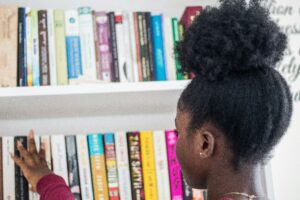After the post on Tuesday about all things art, I thought I would make today’s post about maths and science (although I’m always surprised by just how much artistry and creativity there is in these areas).
It’s impossible to be involved in education in Australia and not have heard of Eddie Woo – and for very good reason. Woo’s YouTube channel, also known as WooTube, is an absolute goldmine of help and information for teachers, students and parents at the moment. For teachers, Woo has put up a series of instructional videos called ‘Teaching with YouTube’ on how to make YouTube videos – an incredibly helpful resource if this is something you’re having to do for the first time, and also great if you’re using other types of media like video conferencing to make sure your students can both hear and see you properly. For everyone else, there’s the fantastic videos on mathematical and technological concepts that Woo has on the channel. If you have a student or child who is stuck on their maths work (this is probably most applicable to secondary students), WooTube is a great place to find a video to help explain whatever it is they can’t work out. There are playlists for things like calculus, algebra and differentiation, so I’d start there. Good luck with not falling down the rabbit hole of information that Woo has put together! (If you want even more, he also has a website.)
Anyone who’s listened to Triple J or ABC radio over the past 20-odd years will be familiar with Dr Karl. Answering all manner of weird and wonderful questions about science (anyone else remember the great bellybutton lint experiment of the late 90s?), Dr Karl is both startlingly knowledgeable about science, and a brilliant communicator. He has a website which includes links to articles and podcasts which cover topics as diverse as how geckos stick to walls and why we sleep, through to the science behind the horrendous bushfire season we’ve just experienced. Lots to read and listen to for the curiously minded.
On Tuesday, I looked at how a couple of art galleries have made themselves accessible from home. While Questacon hasn’t reacted specifically to current circumstances, they do have an excellent section on their website called Science at Home. This includes videos of guest speakers and experiments, step-by-step guides to experiments you can conduct at home, and links to other resources. There are things here for children from pre-school all the way through to Year 12.

One of the few silver linings to the current closures and social distancing measures is that the reduced light pollution means that we can see far more stars than normal in big cities. The Sydney Observatory publishes a monthly star guide and podcast which takes star gazers through the constellations that can be observed that month, and how to find them (these resources are applicable for most of Australia). The guide and podcast for April are now up on the website. While the podcast goes into a lot of detail that may be a bit overwhelming for young children, many older children (and adults) will find the maths of star gazing fascinating. Even if you’re not up for the technicalities, spending some time trying to find the constellations in the star guide is a wonderful thing to do with children of any age. You might even like to have them research the names or discoveries of the stars, some of which have amazing stories behind them.
I wish you well for the rest of the week, and I look forward to bringing more fantastic content to you next week.
Stay safe and well.
Regards,
Jemma
To stay in touch with the Teachers’ Hub, please subscribe to our newsletter (the form can be found at the bottom of the page), where we will keep you updated with new releases, along with letting you know about great resources, activities and important news.
For more great content, please follow our social media channels on:
Facebook @HarperCollinsChildrensBooksAustralia
Instagram @harperkidsau
Twitter @harperkidsoz
where HarperCollins Children’s Books will be sharing reading recommendations, fun activities and insights into the world of making children’s books.





